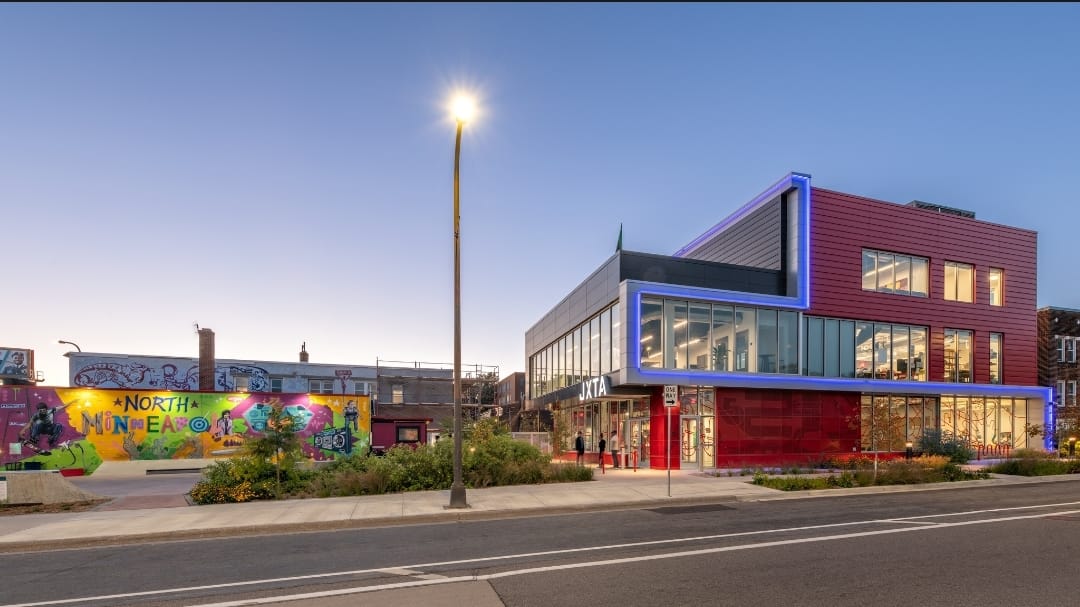

Today we’d like to introduce you to Roger Cummings.
Hi Roger , please kick things off for us with an introduction to yourself and your story.
So i suppose My story begins in the 1980s on the streets of South (3813 Park ave , 2 blocks away from George Floyd square ) and North Minneapolis, where I came up in the graffiti and breakdancing culture as a B-Boy with the Floor Rockers . I was making airbrushed shirts and party flyers for TraviTron ( Travis Lee) the first DJ the create a Hip Hop Show on local radio 89.9 KMOJ —not just as a hustle, but as a way to earn respect, keep bullies away and visibility with my girlfriend at the time DeAnna ( Now my wife and co founder of JXTA). That early fusion of creativity, resourcefulness, and survival instinct planted the seeds for everything that came after.
I didn’t follow a straight path. I dropped out of high school, got my GED, worked as a janitor cleaning skyscrapers downtown—and somewhere in the midst of that, I started to realize that creativity could be a form of resistance and a tool for community-building. That’s when I co-founded Juxtaposition Arts (JXTA). We started small—just a few young artists and a dream—but over 30 years, we’ve grown into a nationally recognized hub for creative education, design justice, and cultural production.
Alongside JXTA, my own practice has evolved. Its social sculpture—a way of designing spaces, moments, and systems that invite community participation, challenge power, and reflect the layered beauty of Black, Indigenous, and diasporic life. My work spans murals, illuminated installations, collages, urban design, and archive-building, but what ties it all together is a belief that art isn’t just something you look at—it’s something you live inside of. Something that can shape how people feel about themselves and their place in the world
We all face challenges, but looking back would you describe it as a relatively smooth road?
Geez , nothing has been smooth . from being taken seriously as a Artist/Business person the obstacles, and the re-routes have all been part of social sculpture.
I’ve experienced real loss, systemic barriers, and personal turning points. I dropped out of high school after a traumatic incident. I’ve worked minimum-wage jobs while trying to build an art practice and a community institution at the same time. I had to navigate being a young Black creative in a city—and in sectors—that didn’t always know how to value that.
In the early years of Juxtaposition Arts, we were under-resourced, often overlooked, and constantly told we needed to shrink our ambition to fit available funding. But we chose not to. We believed young people in North Minneapolis deserved access to the same high-level design tools, mentorship, and visibility as kids at elite art schools. That belief carried us through everything from burned-out buildings to capital campaigns, gentrification pressures, and the challenges of scaling a mission while staying rooted, autonomous and self determined
And personally, I’ve had to learn how to move between worlds—corporate boardrooms, grassroots spaces, Ivy League institutions, global art networks—without losing the essence of where I came from or why I started. That kind of code-switching, that constant shape-shifting, is both a superpower and a burden and im sure even tho i havent been tested , im sure i have ADHD, neuro divergent, if not dyslexic . I made a place ( JXTA ) where those traits are seen as superpowers and those attributes thrive into productive lives.
the struggle gave me depth i suppose . It taught me that sometimes the most powerful materials in a social sculpture are the invisible ones—resilience, memory, risk, and imagination. and leaders are not the most verbose , overtly confident , ,talk and spell perfectly, and hord power money and opportunity.
Appreciate you sharing that. What should we know about JXTA/Juxtaposition Arts?
Juxtaposition Arts (JXTA) isn’t just an arts organization—it’s a living social sculpture.
We are a Black-led, , design-driven cultural production institution based in North Minneapolis. For nearly 30 years, we’ve been building an ecosystem where emerging artists and designers—primarily BIPOC and from underrepresented communities—get paid to learn, create, and lead.
At our core, we operate like a hybrid: part design firm, part art school, part community laboratory. Our offerings include Environmental Design, Graphics, Textiles & Apparel, Public Art, and a soon-to-be-launched Residency + Archive program. These aren’t just “programs”—they’re creative engines producing everything from public installations and murals to branded campaigns, zines, lighting sculptures, textiles, and urban design strategies.
We design Small area plans, Cultural landscapes,pocket parks, Sculptures, lighting,bike racks, Parklets, Brand identities, benches/seating , Murals, fine art for interiors, Transit planning, Urban planning/Design.
What sets us apart is that our young creatives don’t just apprentice—they lead. We’re known for training the next generation of cultural producers, strategists, and place-makers in real-world settings. We’ve collaborated with museums, corporations, neighborhoods, cities, and grassroots organizers—always translating community vision into tangible, high-quality design work.
Brand-wise, what I’m most proud of is that we’ve built something lasting and flexible. We’ve stayed rooted in our neighborhood, but our impact reaches far beyond Minneapolis. We’ve helped shift the narrative: that excellence, polish, and innovation can come out of a place often written off. And that young people—especially young people of color—aren’t the future of design and art; they are the present.
If there’s one thing I want readers to know about our brand, it’s this: JXTA is a model of what’s possible when Art, Culture, and entrepreneurship intersect. Whether you’re looking to commission a mural, build out a culturally-responsive design process, invest in creative workforce development, or co-create a more just and beautiful public realm—we do that. And we do it with integrity, intention, and style.
If we knew you growing up, how would we have described you?
only child grew up a defiant learner and creative outlier—navigating ADHD, PTSD, and systems that didn’t see me. My heroes weren’t in textbooks—they were anarchist Black Panthers, and outlaws who protected their communities and lived by their own code. I saw harm, but I also saw brilliance. So I flipped it: sell dope art, not dope. Fight gatekeepers, not your people.
I’ve always loved bubbles, animals, beauty. We still build feral cat houses at JXTA. And we created rooftop bubble machines at our busy intersection to slow traffic and spark joy. That’s social sculpture—art as intervention, safety, Flavor and Dopeness.
Through Juxtaposition Arts and my own practice, I create environments where Black and Brown creatives lead, design, and transform space. I wasn’t softened by time—I was sharpened. And I’m here to build what others said wasn’t possible.
Contact Info:
- Website: https://www.juxtaposition.org
- Instagram: https://www.instagram.com/jxta_arts/
- Facebook: https://www.facebook.com/profile.php?id=1642301450
- Youtube: https://www.youtube.com/@JuxtaMPLS

Image Credits
me the pic of me . and the building is Morgan Sheff











